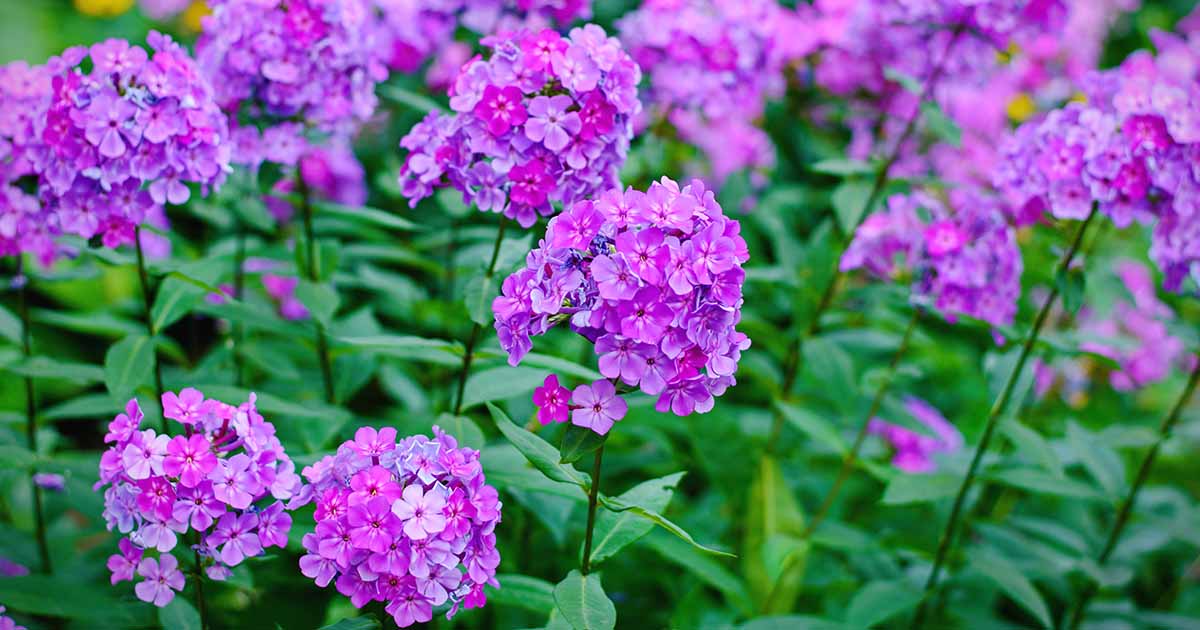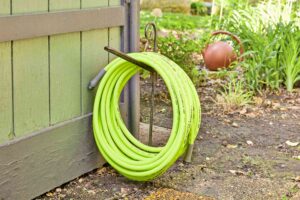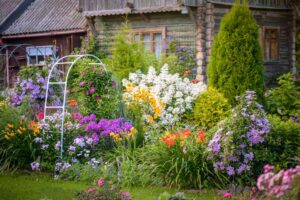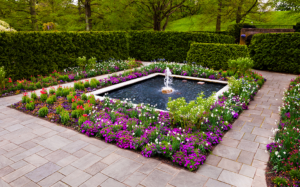Transform Your Garden with Vibrant, Long-Blooming Garden Phlox
Garden phlox stands as one of the most beloved perennials in American landscapes, offering weeks of colorful blooms that attract butterflies and hummingbirds while filling summer gardens with sweet fragrance. These versatile plants serve as reliable backbone perennials, providing height, structure, and brilliant color when many other flowers begin to fade in the summer heat. Whether you’re looking to create a traditional cottage garden, enhance a native plant landscape, or simply add reliable color to your perennial borders, garden phlox delivers impressive results with relatively minimal care.
Understanding Garden Phlox
Garden phlox (Phlox paniculata) stands as an American garden classic, displaying vibrant blooms from mid-summer through early fall. This upright perennial is native to the eastern and central United States and grows 2-4 feet tall with a 2-3 foot spread. Its narrow, elliptical dark green leaves create the perfect backdrop for the showy clusters of fragrant flowers that come in an array of colors including white, pink, red, purple, and lavender.
These blooms, measuring 1.5-2.5 cm (0.6-1.0 in) in diameter, are often strongly fragrant and create a spectacular summer display. As a hardy perennial in USDA zones 4-8, garden phlox serves as a cornerstone plant in perennial borders, cottage gardens, and native plant landscapes.
Best Time to Plant Garden Phlox
Timing is crucial when establishing garden phlox for optimal growth and flowering. For the healthiest plants that will reward you with abundant blooms, follow these seasonal planting guidelines:
Spring Planting
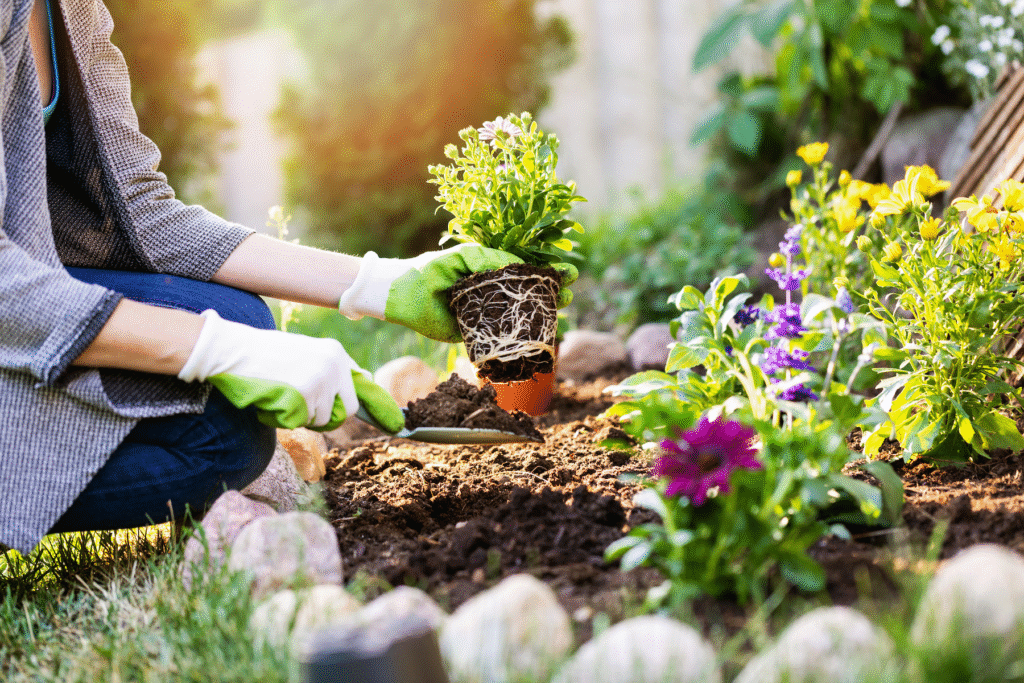
Spring remains the ideal time to establish garden phlox. Plant after the threat of frost has passed when soil temperatures have warmed. Spring planting gives phlox ample time to develop a strong root system before the heat of summer arrives, increasing the chances of abundant blooms in the first season. When purchasing potted nursery plants in spring, look for compact, healthy specimens with deep green foliage.
Fall Planting
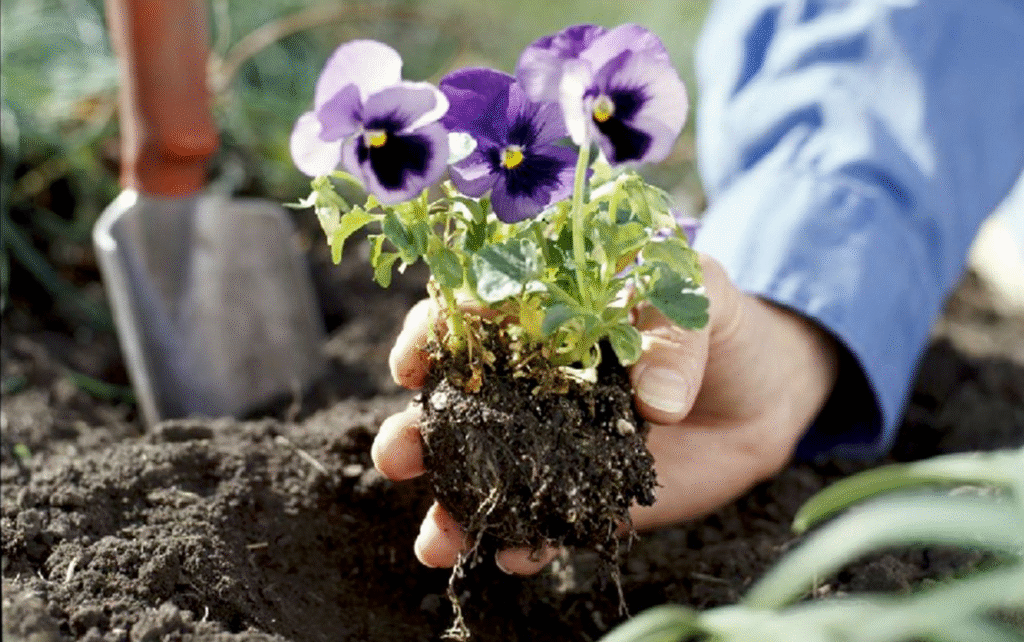
You can also plant phlox in the fall, at least one month before the first fall frost, to give the roots time to get established. This gives the plants time to establish their root systems before winter dormancy. However, avoid purchasing bare root plants in the fall as fall-planted specimens are more subject to frost heaving. If you do plant in fall, apply a 4-6 inch layer of mulch around the plants after the ground freezes to protect them from winter’s temperature fluctuations.
Year-Round Considerations
Potted nursery plants may be transplanted into the garden throughout the growing season, right up to early autumn. If you’re working with container-grown plants in the summer months, be sure to provide extra water and some afternoon shade until they become established. For the best results when planting at any time of year:
- Prepare the soil by incorporating 2-4 inches of compost to improve fertility and drainage
- Dig a hole twice the width of the root ball and at the same depth
- Position the crown (where stems meet roots) about 1-1.5 inches below the soil surface
- Space plants 18-24 inches apart to ensure adequate air circulation
- Water thoroughly after planting, keeping soil consistently moist until established
Tall Garden Phlox: Best Varieties
Garden phlox offers an impressive diversity of cultivars to suit nearly any garden style and color preference. The best varieties combine vibrant blooms with disease resistance, especially to powdery mildew, which can sometimes plague these summer stunners.
Classic Mildew-Resistant Varieties
- ‘David’ – This pure white-flowering garden phlox features enormous, brilliant white flower heads with delicious fragrance. Notable for its highly mildew-resistant foliage, it was named the 2002 Perennial Plant of the Year. Growing 38 inches tall by 18 inches wide, this standout variety remains one of the most reliable white phlox.
- ‘Jeana’ – A relatively new introduction notable for its multi-month bloom time and colorful lavender-pink clusters of sweet fragrant flowers. This variety has exceptional mildew resistance and keeps its clean bright green foliage all season long. Named the 2024 Perennial Plant of the Year, ‘Jeana’ has a tall, sturdy habit reaching five feet tall with domed trusses atop stiff stems. While each floret is smaller than other varieties, the number per bunch more than makes up for their size. What’s especially noteworthy is that Mt. Cuba Center trials found it to be the most attractive to butterflies among all phlox varieties.
- ‘Delta Snow’ – A longtime pass-along plant from the Mississippi Delta area that features clear white flowers dotted with a purple eye, held in large clusters from early summer to fall. It’s considered one of “the very best” when it comes to mildew resistance according to the New York Botanical Garden.
- ‘Shortwood’ – Consistently topping plant trials, ‘Shortwood’ excels in powdery mildew resistance and overall vigor. Clusters of rich pink flowers with cerise centers crown tall stems. Its large pyramidal clusters, held stiff and upright, reach 6-12 inches long with a long bloom time from July through September. Despite its name, this is one of the taller varieties.
Newer Disease-Resistant Introductions
- ‘John Fanick’ – Developed in Texas for heat tolerance, this variety features pretty-in-pink, two-tone fragrant flowers. It remains extremely mildew resistant even in humid conditions, making it ideal for Southern gardens.
- ‘Robert Poore’ – A tall variety (5+ feet) with vibrant magenta-pink blooms that has consistently performed well in mildew-resistance trials across different regions.
- ‘Volcano Purple’ – Features lavender/purple florets with a white eye in a very compact form, growing just 12-20 inches tall and 18-24 inches wide. This smaller stature makes it perfect for the front or middle of borders.
When selecting garden phlox varieties, consider your specific growing conditions. A cultivar rated as mildew resistant in Chicago might not perform as well in Atlanta or Dallas due to different humidity and temperature patterns. For best results in humid regions, prioritize exceptional air circulation around plants by proper spacing and strategic placement in the garden.
Old-Fashioned Garden Phlox: A Timeless Classic
While modern hybrids offer improved disease resistance and novel color patterns, there’s something to be said for the charm and resilience of old-fashioned garden phlox varieties that have stood the test of time in American gardens.
The Heritage of Garden Phlox
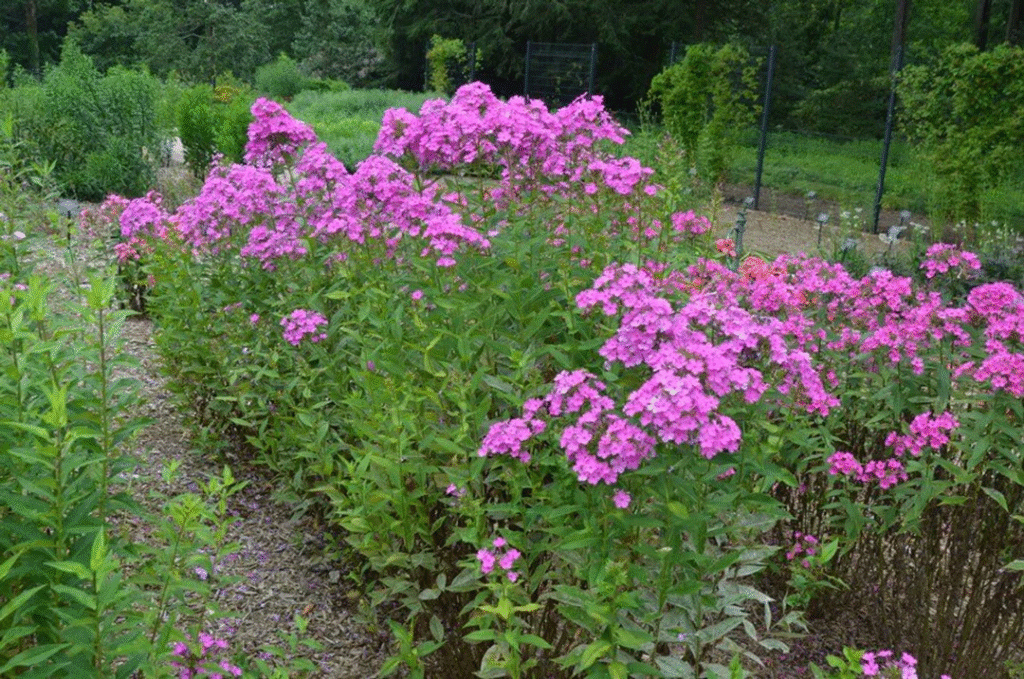
Garden phlox has a rich American heritage dating back centuries. As Louise Beebe Wilder noted in her 1916 book My Garden, phlox “is a native, and with true American perspicacity and enterprise has forged his way from magenta obscurity to the most prominent place in the floral world.”
The earliest cultivars of garden phlox were actually developed in Europe in the 1880s before finding their way back to American gardens. By the early 20th century, the popularity of garden phlox had reached its peak, with an astonishing variety of cultivars available.
In the 1940s, there were still over 220 named varieties available in New England nurseries alone. However, phlox suffered a downturn in popularity from the 1940s to the 1980s, when perennial gardening in general came to be regarded as old-fashioned and rather quaint, and this is when so many old cultivars were lost.
Classic Heirloom Varieties
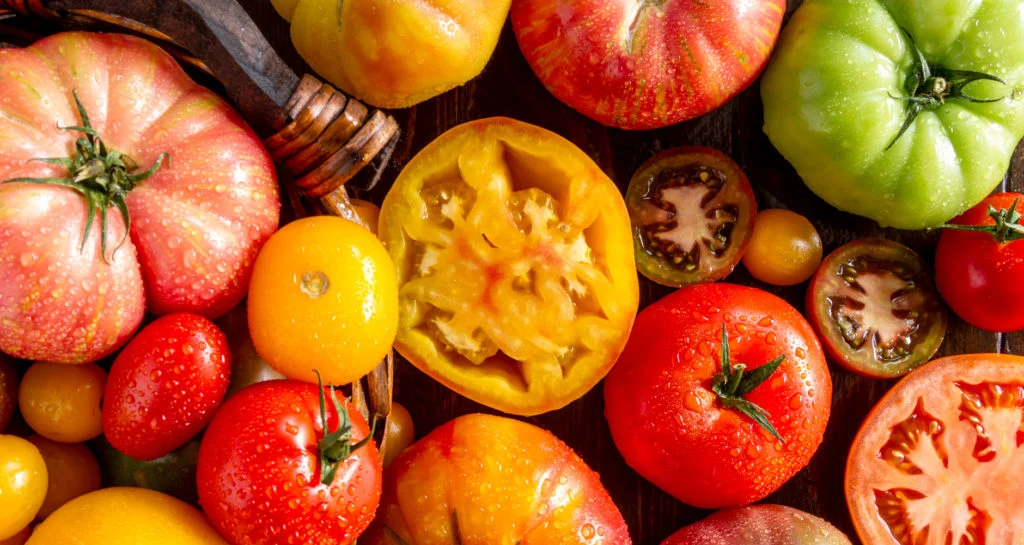
Some of the most treasured old-fashioned garden phlox varieties that have stood the test of time include:
- ‘Katherine’ – Introduced in the 1920s but had been all but forgotten by gardeners until being rediscovered decades later. It features pretty lavender blossoms with a white eye, a combination that gives it a calming quality. Remarkably mildew-resistant, it was the best performer in disease resistance trials in the 1990s.
- ‘Old Cellarhole’ – A pass-along plant found growing at the ruins of an old New England homestead. Its soft pink blooms feature a darker eye and exceptional fragrance. It’s prized for its height (over 5 feet) and remarkable mildew resistance.
- ‘Miss Lingard’ – One of the earliest blooming tall phlox, with pristine white flowers and glossy, disease-resistant foliage. While technically a different species (Phlox carolina), it’s often grouped with garden phlox in garden settings.
- ‘Bright Eyes’ – A classic with pale pink blooms centered with a prominent crimson eye. This variety has been gracing American gardens since the mid-20th century.
The Appeal of Heirloom Phlox
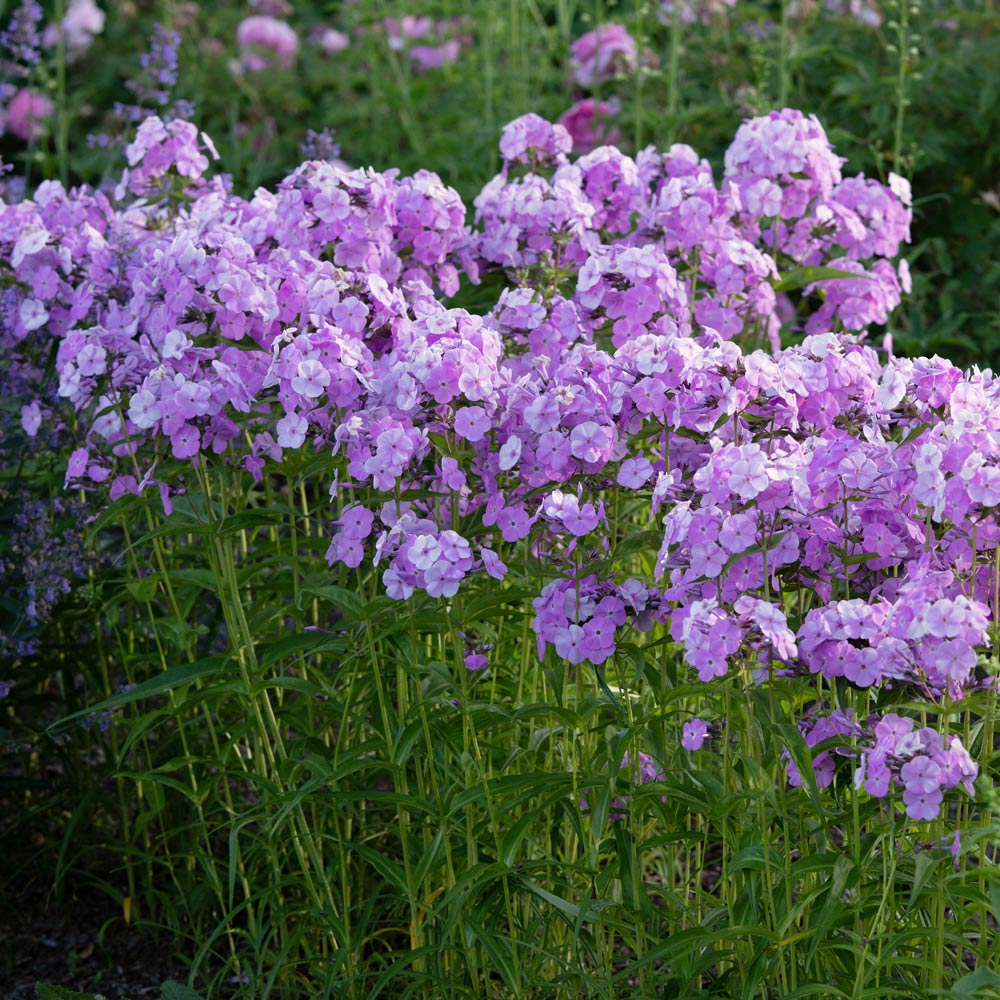
Old-fashioned garden phlox varieties often possess several advantages over many (but not all) newer hybrids:
- Proven resilience – They’ve survived decades of garden cultivation with minimal care
- Superior fragrance – Many modern hybrids have been bred for color and form at the expense of scent
- Height and presence – Traditional varieties tend to grow taller (often 4-5 feet) compared to more compact modern hybrids
- Natural vigor – Heirloom varieties typically have stronger root systems and more abundant bloom
- Historical connection – “Heirloom plants are rooted in story,” connecting gardeners to the past while spurring them “toward the future.”
Many gardeners today combine both heirloom and modern phlox varieties to enjoy the best of both worlds—the nostalgic charm and proven performance of the classics alongside the novel colors and enhanced disease resistance of newer introductions.
Growing Garden Phlox from Seed
While most gardeners purchase established phlox plants, growing from seed can be a rewarding way to propagate these perennial beauties—especially if you’re interested in experimenting with color variations or preserving heirloom varieties.
Understanding Phlox Seeds
Garden phlox seeds are relatively small and require specific conditions for successful germination. Unlike their annual counterparts, perennial garden phlox seeds have particular requirements that must be met to achieve good germination rates:
In the wild, the seeds naturally require a cold period to break dormancy. The name “phlox” comes from the Greek word for “flame,” referring to the vibrant colors of the flowers.
Cold Stratification: Essential for Success
One of the most crucial aspects of growing garden phlox from seed is understanding the need for cold stratification:
For spring planting, mix the seeds with moist sand and store in the refrigerator for 60 days before planting. Keep the soil lightly moist until germination. This process mimics the natural winter conditions that break seed dormancy.
Alternatively, you can direct sow phlox seeds in late fall, allowing nature to provide the necessary cold period through winter. This approach often yields better germination rates as the seeds experience temperature fluctuations that help break dormancy naturally.
Sowing Methods
When growing garden phlox from seed, you have two main options:
- Indoor Starting
- Garden phlox seeds need to go through a cold stratification process to help them germinate. Seeds should germinate in around 14-21 days at a soil temperature of 64 to 68 degrees Fahrenheit.
- Start seeds indoors 6-8 weeks before the last expected frost
- Plant in seed-starting trays with a quality potting mix
- Keep soil consistently moist but not soggy
- Provide bright light without direct sun
- After germination, transplant seedlings outdoors once danger of frost has passed
- Direct Outdoor Sowing
- When growing perennial phlox from seeds it is best to do so outdoors. Sow the seeds into flats, and lightly cover the seeds in the autumn. The flats should then be sunk into the ground in a fully shaded part of the garden, and covered with glass.
- Cover seed with 1/8″ fine soil. Darkness is required for germination. Thin when first true leaves appear.
- Maintain consistent moisture until germination
- For fall sowing, mark the area well so you don’t disturb it during winter
Care of Seedlings
Once your phlox seeds have germinated, proper care of the young seedlings is critical for establishing healthy plants:
- Light Requirements – Gradually increase light exposure as seedlings develop
- Watering – Keep soil consistently moist but not waterlogged
- Fertilization – Apply a diluted, balanced fertilizer when seedlings have several true leaves
- Hardening Off – For indoor-started seedlings, gradually acclimate them to outdoor conditions over 7-10 days
- Spacing – Seedlings should be spaced at about 15 cm (6 inches – small species) to 60 cm (2 feet – large varieties) apart; they require good circulation of air to prevent mold.
From Seedlings to Flowering Plants
Garden phlox grown from seed typically takes longer to flower than those propagated from cuttings or divisions. Don’t expect blooms in the first year—most garden phlox seedlings will flower in their second year after planting, though some may produce a light bloom late in the first growing season under ideal conditions.
An important consideration when growing garden phlox from seed is that the resulting plants may not be identical to the parent plants. If growing named cultivars, seed propagation will likely result in plants that revert toward the wild species’ characteristics, particularly in color. For exact replicas of named varieties, vegetative propagation through division or cuttings is necessary.
Summary: Garden Phlox Care Calendar
For the healthiest plants and most abundant blooms, follow this seasonal care routine for garden phlox:
Spring
- Divide established plants every 2-3 years in early spring
- Apply a balanced fertilizer as new growth emerges
- Remove any winter mulch as temperatures warm
- Plant new phlox after danger of frost has passed
- Check for and remove any diseased foliage from the previous year
Summer
- Water during dry periods, focusing on the roots and avoiding wetting foliage
- Deadhead spent flowers to encourage continued blooming
- Monitor for powdery mildew and treat if necessary
- Consider the “Chelsea Chop” (cutting back by half in late May) for bushier plants and delayed bloom
Fall
- Cut stems back to 2-3 inches above ground after first killing frost
- Apply a layer of mulch after the ground freezes in colder regions
- Plant container-grown phlox at least one month before first frost
- Collect and save seeds if desired
Winter
- Apply a thick layer of mulch in zones 4 and colder to prevent frost heaving
- Order seeds or plants for the following growing season
- Plan garden expansions or renovations
Conclusion
Garden phlox stands as an enduring perennial for good reason. With proper care and selection of appropriate varieties for your growing conditions, these versatile plants reward gardeners with weeks of vibrant color, sweet fragrance, and valuable nectar for pollinators. Whether you choose classic heirloom varieties or newer mildew-resistant cultivars, garden phlox brings reliability and beauty to the summer garden.
By understanding the specific needs of garden phlox—full sun to light shade, consistent moisture, good air circulation, and occasional division—you can enjoy these garden classics for many years to come. Their impressive bloom power, coupled with their relatively few maintenance requirements, makes them an excellent choice for both beginning and experienced gardeners alike.
As you incorporate garden phlox into your landscape, consider pairing them with complementary perennials like coneflowers, black-eyed Susans, ornamental grasses, and daylilies for a dynamic summer display that evolves throughout the growing season. With their height, color, and commanding presence, garden phlox truly earns its place as a cornerstone plant in traditional perennial gardens and contemporary landscapes alike.
